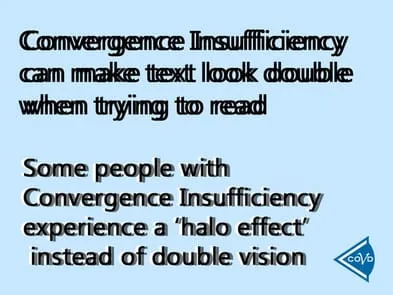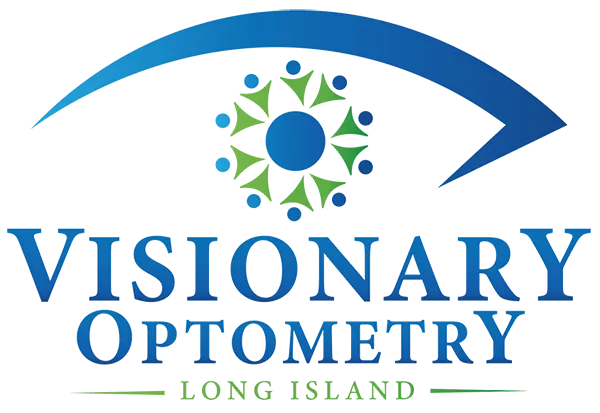
Vision therapy is treatment using lenses and prisms to improve the way eyes team together, keep images clear when changing our gaze near to far, and develop smooth accurate movements when tracking moving objects and words on a page. It is designed to resolve vision problems that can make it harder or uncomfortable to use our vision to do computer work, school work, driving, or sports. This therapy can also be used as an effective treatment for problems like lazy eye, crossed eyes, or double vision.
COMMON QUESTIONS ABOUT VISION THERAPY
There is more to vision therapy than simply strengthening the eyes. It also enhances the neurological connections between the eyes and the brain. Eyes are the windows of the brain. The brain directly influences sight based on how it interprets images received. A healthy connection between the eyes and the brain is essential for good eyesight.Here are answers to frequently asked questions about the nature of vision therapy:
HOW DOES VISION THERAPY WORK?
It uses progressive, individualized vision exercises performed by an optometrist or under the direct supervision of your optometrist. Each set of exercises is tailored to meet the individual visual needs of a patient. These exercises are done in office each week, then select exercises are given to be practiced on your own. The exercises are designed to continue until visual processing problems have improved as much as possible with the goal of reaching normal scores on all eye teaming and tracking assessments.
WHAT IS THE PURPOSE OF THE VISION EXERCISES?
Vision exercises are designed to help patients improve basic visual skills that allow the eyes to send clearer, more accurate images the brain. These exercises can improve visual efficiency by changing how a patient interprets images. This helps them quickly process and understand what they are seeing.
DO THESE EXERCISES SIMPLY STRENGTHEN EYE MUSCLES?
The goal of optometric vision therapy (VT) is not to strengthen eye muscles. Your eye muscles are already incredibly strong, and the vision problems VT aims to treat are rarely caused by muscle weakness. Instead, vision therapy aims to retrain the learned aspects of vision through neuroplasticity, the ability for our brains to create new connections from birth through adulthood.
WHAT IS THE FIRST STEP IN A VISION THERAPY PROGRAM?
At Visionary Optometry, a developmental or rehabilitation vision evaluation requires 3 appointments. The first, is a comprehensive vision exam which goes beyond a standard eye exam, and tests the basics of tracking, eye teaming, near-far focus, color vision, peripheral vision, eyeglasses, and eye health. The second appointment is specialized vision testing to further investigate areas of weakness found in the first exam for eye teaming, peripheral vision, near-far focus, further tracking tests, specialized eyeglass prescriptions, and visual perception. The third appointment is a conference with Dr. Ceonzo, where she can explain the tests, their findings, and what the best next steps should be.
IS THERE SCIENTIFIC EVIDENCE THAT IT REALLY WORKS?
It does work. Scientific studies on vision therapy show it is effective in improving the lives of patients. Data shows that this therapy can improve visual function enough to keep it from interfering with a patient's ability to absorb information and learn. Click the link below to see numerous articles and studies about vision therapy.
https://www.covd.org/page/researchWHO TYPICALLY NEEDS VISION THERAPY?
It can be a useful tool for helping children and adults alike. Children with learning or reading problems can benefit from correcting the vision problems interfering with learning. Eyeglasses are not the only solution when the problem is visual processing. These problems can't be detected without tests done by an eye doctor. Adults can see improvement through this therapy as well. It can help curb eye-strain and vision processing problems brought on by working with computers or other visual tasks all day.
WHO IS VISION THERAPY FOR?
Vision therapy is safe, drug-free, and effective for both children and adults! While visual acuity (the "20/20" part of vision) requires glasses to improve, visual skills such as tracking along a line of text, noticing cars in our peripheral vision when driving or judging depth when walking down stairs must be learned, and these skills can be improved in life at any age.
It is estimated that 1 in 4 children have a vision problem severe enough to affect their learning in school, but school vision screenings can miss up to half of these problems. A comprehensive vision exam with a developmental optometrist checks all aspects of eye health, vision, and visual skills, and can ensure you or your child are not struggling unnecessarily with an undiagnosed vision problem.
